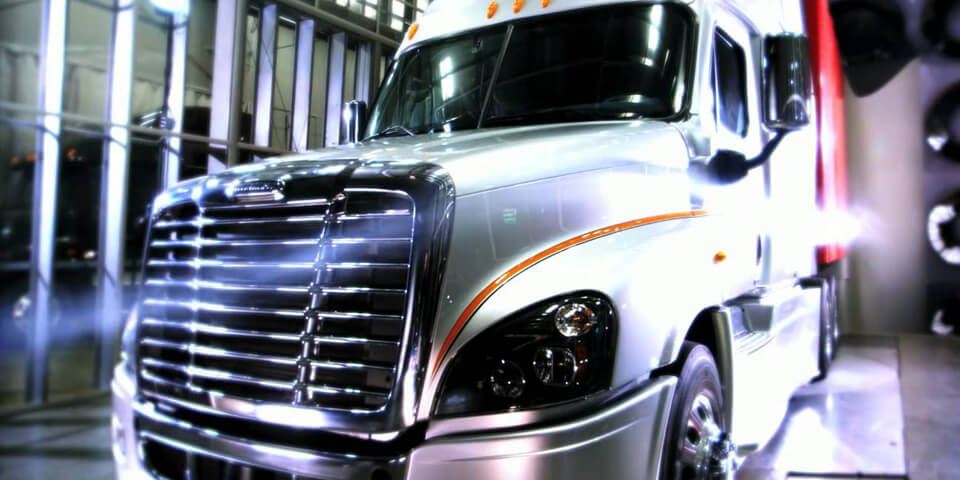In The News

Aerodynamic Solutions: Fact or Fiction?
When Walmart unveiled its concept truck last year, the company gave a glimpse into what the future of trucks and trailers might look like. It showcases an overall vehicle design that accentuates highly advanced aerodynamic styling to boost fuel economy.
But expediters don't have to wait years down the road to enhance their truck's aerodynamics to save money on fuel. Truck makers, sleeper companies, and body manufacturers have all been developing new product designs to reduce a truck's overall wind resistance -- and these products are on the market today.
The key question is: Do aerodynamics products like roof fairings, side skirts, or gap reducers (between a tractor and trailer) make a real-world difference on fuel economy? Or is it about marketing hype driven by product manufacturers?
Less Drag = Less Fuel
The key starting point to exploring this issue is to understand the concept behind aerodynamics.
When a vehicle is in motion, it encounters air resistance (or air drag). The greater the drag on the vehicle, the harder the engine must work to maintain a certain speed. But when you reduce air resistance, there's less strain on the engine. And, as a result, the engine requires less fuel to maintain speed.
So, in theory, aerodynamics should impact fuel economy. But is the result worth the investment in new products and designs for your truck?
The U.S. Environmental Protection Agency (EPA) seems to think so.
According to the EPA, truck manufacturers over the past two decades have reduced the drag coefficient (a measure of wind resistance) of a typical freight truck from about 0.8 to about 0.65 – roughly 20 percent improvement. So, what does this mean in terms of fuel economy?
In its SmartWay report titled "Improved Aerodynamics: A Glance at Clean Freight Strategies," the EPA offers some key statistics on the impact of aerodynamics on truck fuel economy:
- Cutting drag by 20 percent could boost fuel economy up to 15 percent at highway speed.
- Using a streamlined-profile tractor with aerodynamic devices can improve fuel economy by over 3 percent.
- A single unit aerodynamic truck improves fuel economy by 5 percent.
- Adding an aerodynamic trailer can generate up to an 11 percent increase in fuel economy.
- For freight carried on flatbed trailers, securing loose tarpaulins and closing the curtains on curtain-sided trailers can improve fuel economy by up to 2.5 percent and 4.5 percent, respectively.
- Gap reducers that decrease the trailer gap from 45 to 25 inches can improve fuel economy as much as 2 percent.
Running the Numbers
Ok. The EPA statistics show that aerodynamics improves fuel economy. But does 3, 5 or 11 percent fuel economy improvement make that much of a difference in real-world dollars?
Let's run the numbers.
Suppose we can create a 5 percent boost in fuel economy through aerodynamic modifications on an expedite straight truck. And the average fuel economy on that truck (prior to modifications) is 9 mpg. As of press time, the national average for diesel fuel is $2.83 per gallon. So, if the truck travels 80,000 miles per year, how much fuel could you save?
For a truck that operates at 9 mpg, a 5 percent increase in fuel economy translates into 0.5 extra miles per gallon, or 9.5 mpg.
That seems small. But at 80,000 annual miles, that's a difference of 423 gallons or just under $1,200 saved per year (at $2.83 per gallon). Over a five year span, you're looking at $6,000 in fuel cost savings -- money that goes straight back into your pocket.
The Bottom Line
Even small improvements in fuel efficiency from aerodynamic can make a big impact on how much money you ultimately get to keep in your expedite trucking business.





